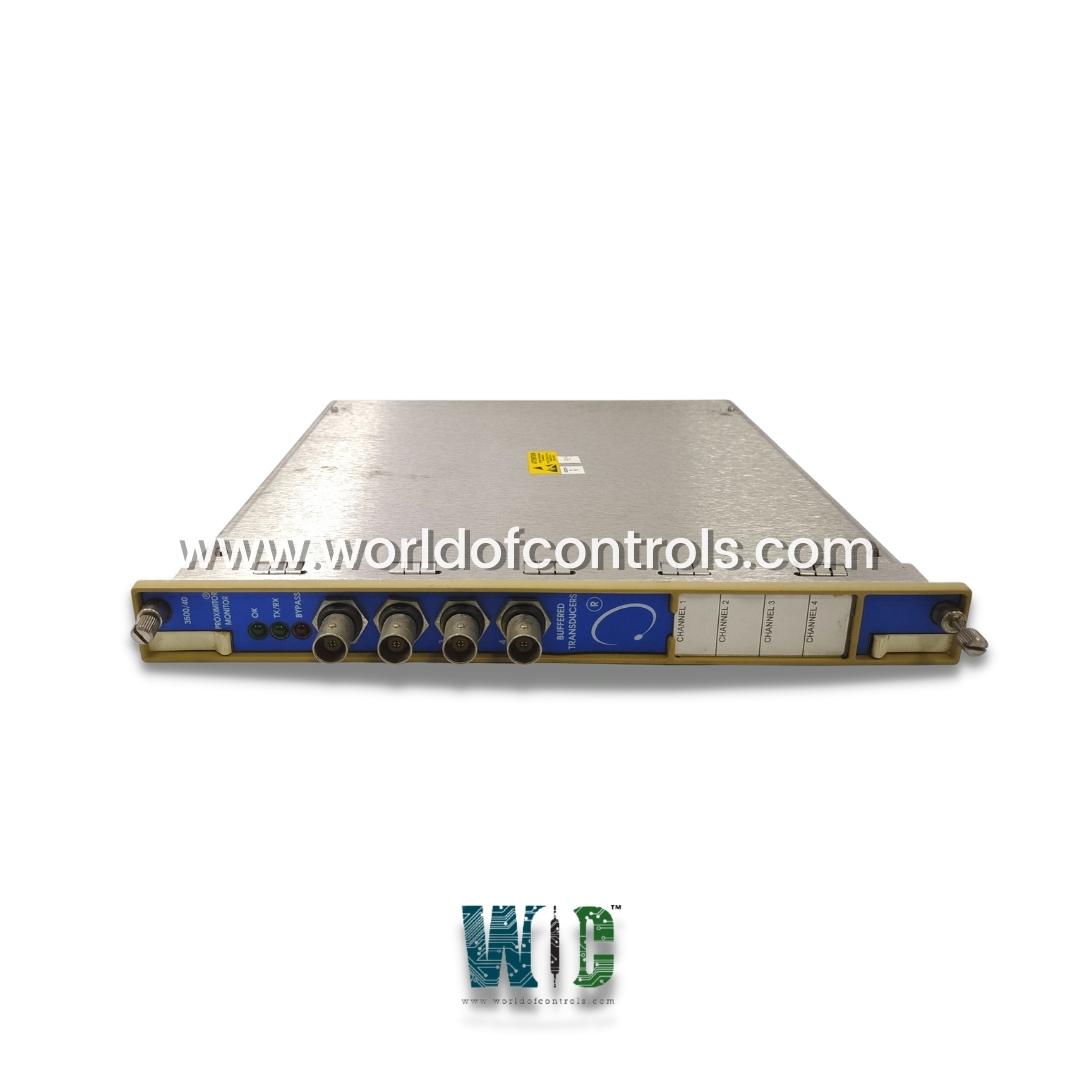
World Of Controls understands the criticality of your requirement and works towards reducing the lead time as much as possible.
3500/40 - Proximitor Monitor Module is available in stock which ships the same day.
3500/40 - Proximitor Monitor Module comes in UNUSED as well as REBUILT condition.
To avail our best deals for 3500/40 - Proximitor Monitor Module, contact us and we will get back to you within 24 hours.
Part Number: 3500/40
Manufacturer: Bently Nevada
Series: 3500
Operating Temperature: -30 to +65 degrees Celsius
Storage Temperature: -40 to +85 degrees Celsius
Humidity: 95%, noncondensing
Product type: Proximitor Monitor Module
Availability: In Stock
Country of Manufacture: United States (USA)
3500/40 is a Proximitor Monitor Module designed and developed by Bently Nevada. It is a Proximitor Monitor I/O Module manufactured and designed by Bently Nevada as part of the 3500 Series used to control the machinery condition monitoring system. The monitors that accept input from proximity transducers made by Bently Nevada, condition the signal to produce different vibration and position measures, and compare the conditioned signals with user-programmable alarms. The Radial Vibration, Thrust Position, Differential Expansion, Eccentricity, and REBAM functions can all be programmed into each channel using the 3500 Rack Configuration Software. The Proximitor Monitor I/O Module is designed to provide the necessary inputs and outputs for connecting proximity probes and monitoring their signals. It typically includes multiple channels to accommodate multiple probes and can interface with various types of proximity probes, such as eddy current probes and capacitive probes. The GE / Bently Nevada Proximitor Monitors are 4-channel monitors that accept input from proximity transducers made by Bently Nevada, condition the signal to produce different vibration and position measures, and compare the conditioned signals with user-programmable alarms. The Radial Vibration, Thrust Position, Differential Expansion, Eccentricity, and REBAM functions can all be programmed into each channel using the 3500 Rack Configuration Software. The Proximitor Monitor I/O Module is designed to provide the necessary inputs and outputs for connecting proximity probes and monitoring their signals. It typically includes multiple channels to accommodate multiple probes and can interface with various types of proximity probes, such as eddy current probes and capacitive probes.
WOC is happy to assist you with any of your Bently Nevada requirements. Please contact us by phone or email for pricing and availability on any parts and repairs.
What is 3500/40?
It is a Proximitor Monitor Module designed and developed by Bently Nevada.
What is the purpose of a Proximitor Monitor I/O Module?
The Proximitor Monitor I/O Module is used to monitor and interface with proximity probes, which are sensors used to measure the distance, vibration, and position of rotating machinery. The module provides inputs for connecting proximity probes, signal conditioning circuits to process the probe signals, and outputs for transmitting the processed signals to monitoring systems or control devices.
What types of proximity probes can be used with an I/O Module?
The module is designed to work with various types of proximity probes, including eddy current probes and capacitive probes. It can accommodate different probe sizes and configurations, allowing for flexibility in monitoring different types of machinery.
Can it provide real-time monitoring?
Yes, the module is designed to provide real-time monitoring of proximity probe measurements. It continuously processes the signals from the probes and outputs the measured parameters, such as displacement or velocity, in real-time. This allows for the immediate detection of any abnormalities or changes in the machinery's performance.